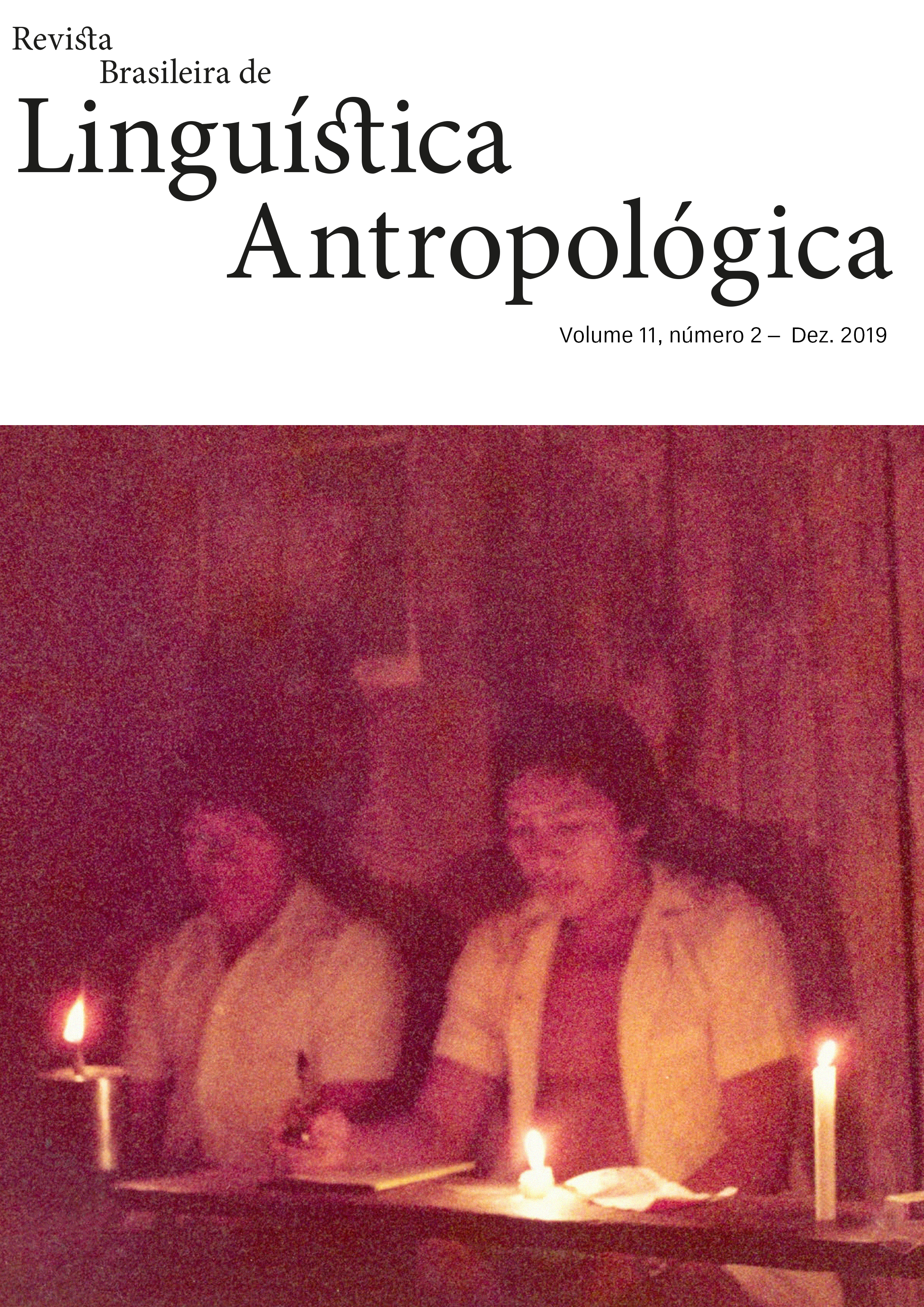Orações relativas em Nheengatú ou Ingatú
DOI:
https://doi.org/10.26512/rbla.v11i02.28115Keywords:
Relativization. Nheengatú. Tupi Guarani. Linguistic contact Syntax.Abstract
The present study deals with the Relative Clauses in Nheengatú or Ingatú language, spoken as the first language by approximately 1,300 baníwas and 1,000 werekénas in the Upper Rio Negro region, and by approximately 5,600 barés in the Upper Rio Negro and Middle Rio Negro. Rodrigues (1986) was the first linguist to deal with the effects of Nheengatú's contact with Portuguese over 300 years, highlighting, as a result of these effects, the development of Relative Clauses in Nheengatú. In the present study, based on Keenan and Comrie (1977, 1979), Keenan (1985) and Payne (1997) I describe the Nheengatú Relative Clauses demonstrating that in this language, subject, direct object, indirect object, oblique and possessed nouns are relativizable, Relative Clauses are external to their heads, and that the noun phrase relativized in relative clauses can perform the functions of subject, direct object, indirect object, and oblique. I also show that in Nheengatús’s Relative Clauses when a noun or an adjective is the nucleus of the predicate, the relativized noun phrase is represented by a gap, but may also be represented by a demonstrative pronoun in certain conditions.
Downloads
References
Cabral, A. S. A. C.; Rodrigues, Aryon Dall'igna . 2003. Dicionário Asuriní do Tocantins - Português. 1. ed. Belém, PA: UFPA/IFNOPAP e UnB/IL/LALI, v. 1. 267p..
Comrie, B. and Keenan Edward L.. 1979. Noun Phrase Accessibility Revisited. Language, Vol. 55, No. 3: 649-664.
Cruz, Aline da. 2011. Fonologia e Gramática do Nheengatú: A língua geral falada pelos povos Baré, Warekena e Baniwa. Tese de Doutorado. Vrije Universiteit Amsterdam.
Keenan, Edward L. 1985. Relative clauses. In Language Typology and Syntactic
Description, vol. II: Complex Constructions, ed. by Timothy Shopen, 141-70.
Cambridge University Press.
Keenan, Edward L. and Bernard Comrie. 1977. NP accessibility and universal grammar.
Linguistic Inquiry 8.63-100.
Payne, Thomas Edward. 1997. Describing morphosyntax: A guide for field linguists. Cambridge: Cambridge University Press.
Rodrigues, A. D.. 2010. A estrutura do Tupinambá. In: Cabral, Ana Suelly A.C.; Rodrigues, Aryon D. (Org.). Línguas e Culturas Tupí 2. Campinas, SP: Curt Nimuendajú; Brasília, DF: LALI/UnB, 2010. p. 167-203.
Rodrigues, A. D.. Argumento e Predicado Em Tupinamba. BOLETIM DA ASSOCIACAO BRASILEIRA DE LINGUISTICA, v. 19, p. 57-66, 1996.
Rodrigues, A. D.. [1953] 2010. Morfologia do Verbo Tupí. In: Revista Brasileira de Linguística Antropológica, vol. 3, n. 1:63-86.
Rodrigues, A. D.. Línguas Brasileiras: Para O Conhecimento das Línguas Indígenas. São Paulo: LOYOLA, 1986. v. 1.
Solano, Eliete de J. B.. Descrição Gramatical da Língua Araweté. 2009. Tese (Doutorado em Linguística) - Universidade de Brasília.
Downloads
Published
How to Cite
Issue
Section
License
Copyright (c) 2019 Revista Brasileira de Linguística Antropológica

This work is licensed under a Creative Commons Attribution 4.0 International License.
Authors who publish in RBLA agree to the following terms:
a) Authors maintain the copyright and grant the journal the right of first publication, and the work is simultaneously licensed under the Creative Commons Attribution License, which allows the sharing of the work with recognition of the authorship of the work and initial publication in this journal.
b) Authors are authorized to assume additional contracts separately, for non-exclusive distribution of the version of the work published in this journal (eg, publish in an institutional repository or as a book chapter), with recognition of authorship and initial publication in this journal.
c) Authors are allowed and encouraged to publish their work online (eg, in institutional repositories or on their personal page) at any point before or during the editorial process, as this can generate productive changes, as well as increase impact and citation of the published work.







